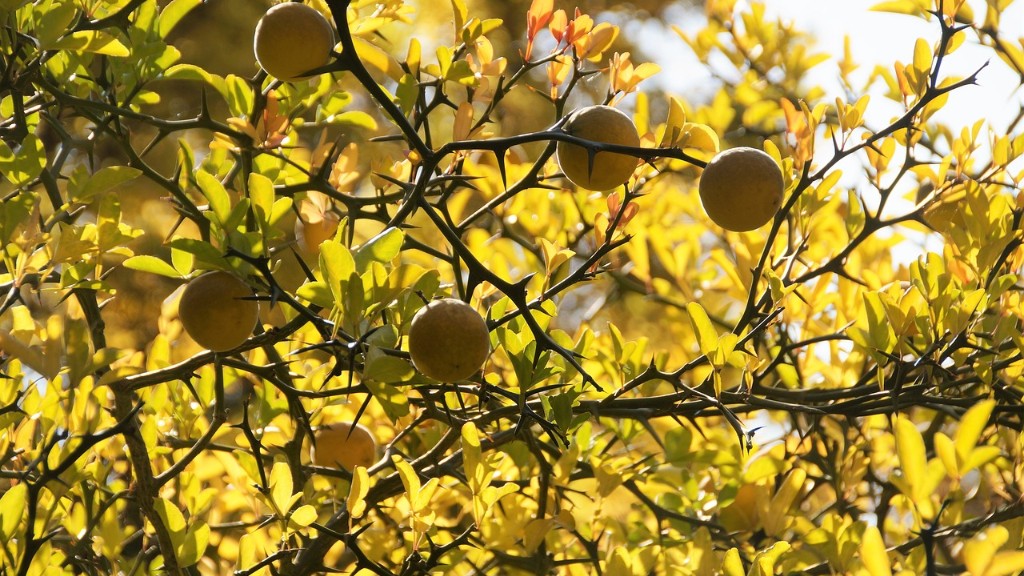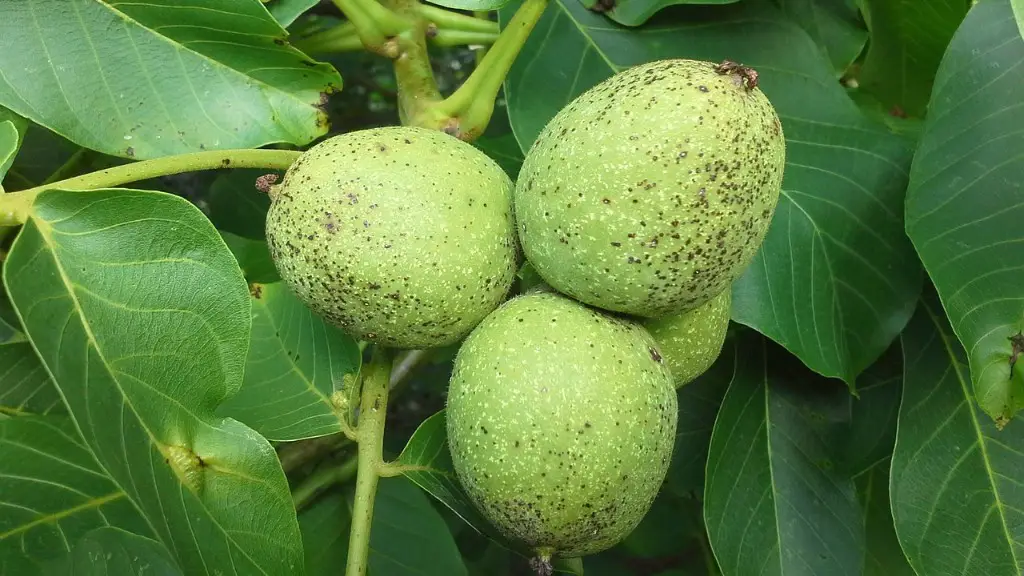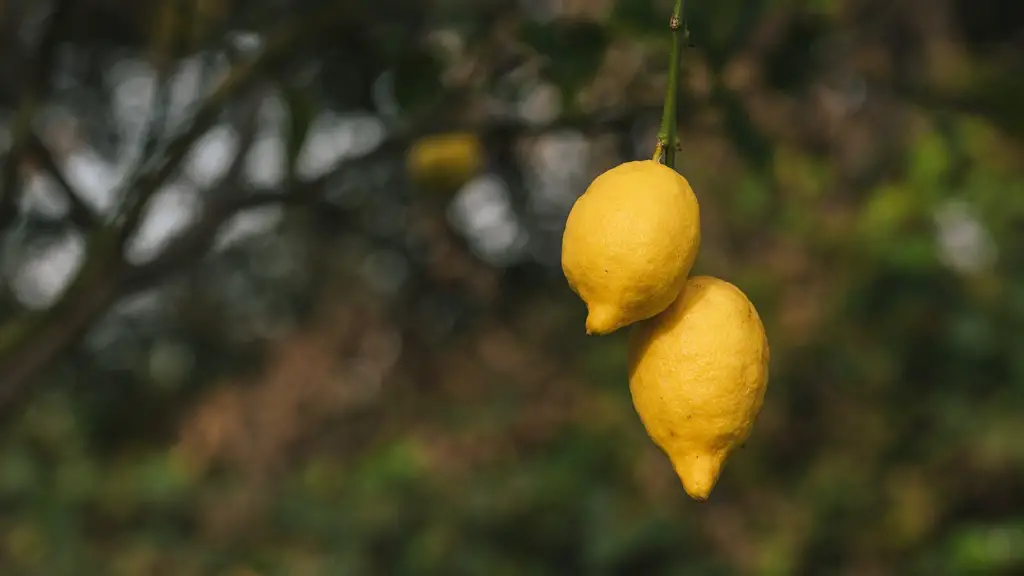Lemon trees are a common sight in many gardens and they provide a colorful reminder of warmer days. Unfortunately, however, some lemon trees may not flower despite the ideal conditions, leaving gardeners wondering why. To help diagnose the cause of the problem, it’s important to understand the needs of lemon trees, as well as any particular environmental factors that could be playing a role.
Lemon trees need full sun for at least eight hours each day. If the ambient light is too low, flowers and fruit will not develop. Many gardeners also forget that citrus trees need to be watered liberally throughout the growing season. Inconsistent watering can lead to stress, stunted growth and no flowering. Similarly, soil type is important: a soil that is low in organic content or prone to water-logging can stunt a lemon tree.
Elevated levels of nitrogen, phosphorus or potassium in the soil can also prevent flowering. A soil analysis can be used to identify any nutritional imbalances, but if you fertilize your lemon tree, it is best to use a lower-nitrogen fertilizer designed specifically for citrus trees. If your lemon tree isn’t getting enough water and nutrients, it may need to be transplanted to another location where it can receive more consistent care.
Finally, lemon trees flower best in mild climates, and if the temperature is too cold, the flowers may fail to develop. If you’re in an area with cold winters, you will need to give your lemon tree some extra protection, such as wraps or blankets, to ensure that it doesn’t experience frost damage or freeze. With a little extra attention and care, you should be able to get your lemon tree to flower.
Speaking With An Expert
If your lemon tree still isn’t flowering, it might be worth speaking to an expert for further advice. A local horticulturalist should be able to carry out a diagnostic evaluation, looking for any untreated issues with the growing environment or the tree itself. Additional fertilizer or pruning may be needed; paying attention to such issues as pruning times and land drainage should be given special consideration. Someone with expert knowledge can provide sound advice on how to tackle these problems, allowing for better plant health and increased success with flowering.
Whatever you do, don’t be tempted to rely on chemical solutions as these can do more harm than good. When dealing with lemon trees, look for non-toxic solutions that don’t typically have long-term effects on the environment, such as introducing natural predators or using shade cloths as a protective measure against heat. Non-intrusive interventions such as these will allow the tree to mature without the damaging effect of some chemicals.
Considering The Variety Of Lemon Tree
Another factor to consider is the variety of the lemon tree you have. Some lemon trees are bred specifically for their flowers and others for their fruits; some even have adapted characteristics which make them better suited to certain climates. Investigate the specific type of lemon tree you have, as this could explain why it isn’t flowering. It could also be that your tree is two young yet to grow flowers and fruit, so comparing its age with other similar trees will help to determine this.
Additionally, some lemon trees may not flower unless they are cross-pollinated with another variety. Make sure to check the requirements of the specific variety of tree and find out if it needs to be pollinated. If your tree still isn’t flowering, and you have checked it’s being exposed to the right amount of sunlight, water, nutrition and temperature, cross-pollination may be the best solution.
Other Factors To Consider
There are still other factors to consider when working out why your lemon tree isn’t flowering and fruit set. Lemon trees are known to be susceptible to diseases and pests and an infestation could be preventing the flowers from developing. Look for signs of an infection and if you spot any, contact a professional for advice on how to eradicate the problem. Otherwise, over-pruning can also limit flowering, so check that the tree is being pruned correctly, especially if it has not been done for a while.
If the lemon tree is still not flowering, it could be suffering from a lack of pollination, meaning the tree needs the assistance of insects in order to produce flowers and fruit. Introducing friendly predatory insects such as bees, ladybugs or hoverflies will help to improve pollination by aiding the fertilization process.
Improving The Health Of The Lemon Tree
Finally, if all else fails, it’s important to remember that a lemon tree may not flower if it is suffering from poor health. Assess the condition of the tree and make sure it is getting the support it needs to survive. Applying mulch around the root zone is good practice, as it helps to manage soil temperatures, retain water and reduce erosion.
Providing plenty of shelter from the wind can also be beneficial, whilst regular feeding and pruning (where necessary) can keep the lemon tree healthy and improve its overall condition. Regularly check the leaves for signs of pest damage, and make sure the pH of the soil is balanced for optimal health. Following these steps could bring about rebound growth, increased flowering and higher yields.
Carry Out Routine Tasks
In addition to these steps, it’s important to carry out routine tasks in order to maintain the ideal environment for your lemon tree. Encouraging beneficial soil microbes to reside in the area will ensure that the tree is receiving sufficient nutrients, while controlling the levels of acidity and alkalinity in the soil can help to reduce the risk of diseases. Keeping the area weeded will prevent competition for sunlight and water, and mulching over exposed roots will aid in water retention.
Overall, lemon trees need full sun, regular watering and well-aerated soil. If these needs aren’t met, the tree will likely suffer from a decrease in flowering. Feeding the plant with fertilizers tailored to its specific needs, transplanting the tree to a new location (where necessary) and keeping its soil in good condition will help to restore its previous flowering performance.
Harvesting The Fruits Of The Tree
Once the tree starts flowering, it should eventually produce fruits as well. Regularly monitor the tree for signs of pests and diseases and use organic pest-control methods where possible. Fruits usually take around five to six months to mature, but can take up to a year depending on the type of lemon tree. Monitor the ripeness of the fruit and harvest them once they become ripe and ready. To prevent fruits from becoming rotten, pick the fruit before they are over-ripe and ensure they are stored in a cool and airy area away from direct sunlight.
Lemon trees need a little extra care, but with a little attention and the right advice, you should be able to get your tree to flower and fruiting. Understanding the ideal conditions that lemon trees thrive in will be key to addressing this issue. Conducting soil tests, inspecting the tree regularly and providing plenty of support should help to restore your tree’s health and allow it to produce healthy fruits.




